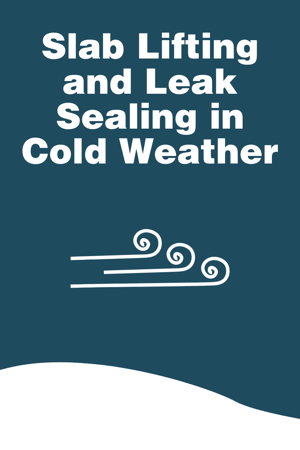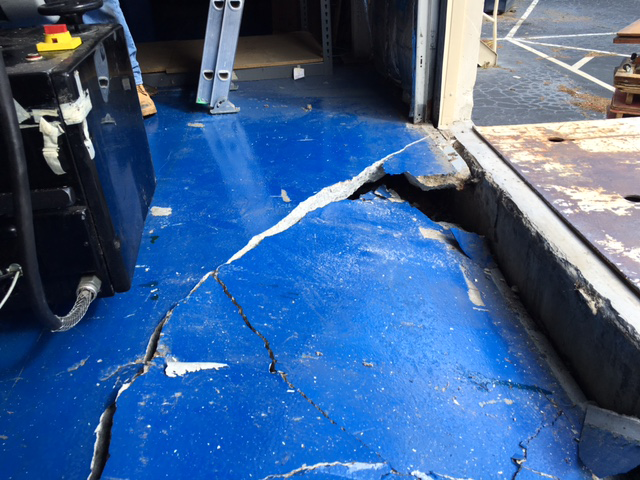.png?width=1400&name=Slab%20Lifting%20and%20Leak%20Sealing%20in%20Cold%20Weather%20(1).png)
 Slab Lifting in Cold Weather
Slab Lifting in Cold Weather
Contrary to popular opinion, as a contractor, you don’t have to put up your equipment and rigs due to cold weather. There are many jobs to be done and many ways to keep your material conditioned. Use this season to your advantage and gain valuable business.
Seasonal attractions such as theme parks, for example, are a great place to start looking for winter work. Many of these parks (the ones that aren’t in Orlando) shut down for the winter and this is the time they do maintenance and repairs. Think of all the concrete lifting and leveling that can be done.
Read all about cold weather slab lifting markets, conditioning materials and more in our blog post Slab Lifting in Cold Weather.
Leak Sealing in Cold Weather
You have a variety of options for seeking leak seal jobs that are inside, out of the elements, during the winter months. (See the linked article below for a list of ideas.) If you’re still up for working outside during the winter months, you’re in luck because concrete contracts during colder weather. The contraction makes cracks open wider (thus easier to seal). One important point to understand is that cold weather requires you to make an extra effort to keep your materials and equipment warm.
Read all about cold weather leak seal markets, conditioning materials and more in our blog post Polyurethane Leak Seal in Cold Weather.




.png?width=238&name=Reparing%20Dangerous%20Sunken%20Slabs%20in%20Warehouses%20and%20Factories%20(2).png)

.png?width=1400&name=Filling%20Dangerous%20Voids%20Under%20Slabs%20(2).png)
.png?width=300&name=Filling%20Dangerous%20Voids%20Under%20Slabs%20(1).png) Why Voids Under Your Slabs are Dangerous
Why Voids Under Your Slabs are Dangerous

.png?width=300&name=Loading%20Dock%20Slab%20Repair%20(1).png)

.png?width=1400&name=Specifications%20for%20Permeation%20Grouting%20with%20Polyurethane%20(2).png)


.png?width=300&name=Jump%20Start%20Your%20New%20Concrete%20Leveling%20Business%20with%20Alchemy-Spetecs%20Fall%202019%20Training%20(1).png) Jump start your concrete leveling business at
Jump start your concrete leveling business at 

.png?width=300&name=Blog%20Outfitting%20a%20Spray%20Foam%20Rig%20for%20Slab%20Lifting%20(2).png)




 Seawalls embody the very image of long-lasting endurance and stability. Without proper maintenance and repair, however, the reality can be a bit different. If your seawall is showing any of the signs listed below, you may want to look into repair options.
Seawalls embody the very image of long-lasting endurance and stability. Without proper maintenance and repair, however, the reality can be a bit different. If your seawall is showing any of the signs listed below, you may want to look into repair options.

 Sinking slabs and soil issues can cause both safety and property value problems. Alchemy-Spetec offers solutions for unlevel concrete and unstable soil.
Sinking slabs and soil issues can cause both safety and property value problems. Alchemy-Spetec offers solutions for unlevel concrete and unstable soil.


